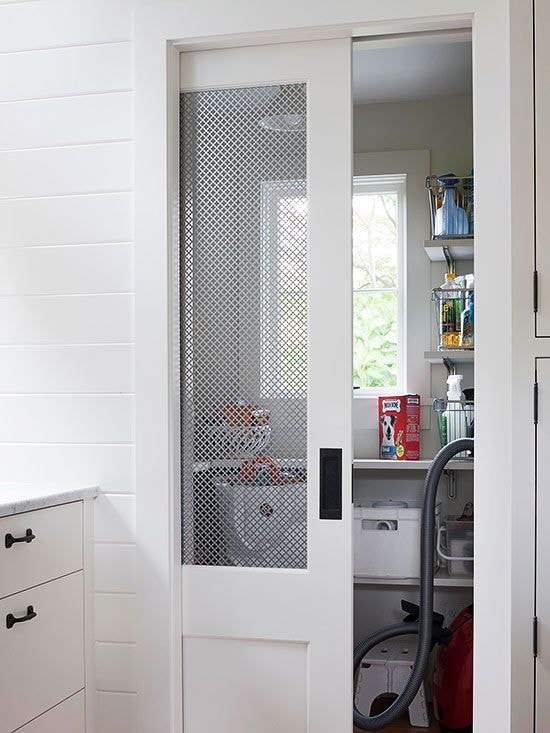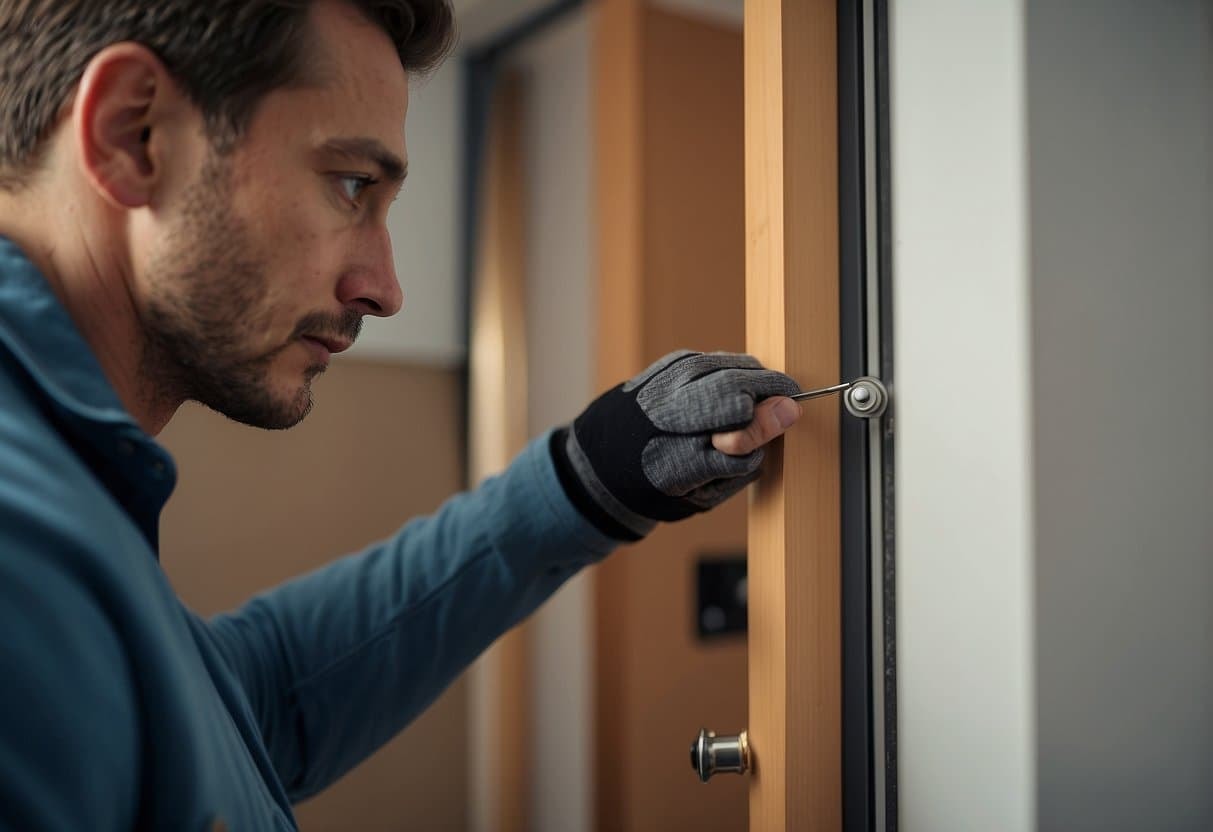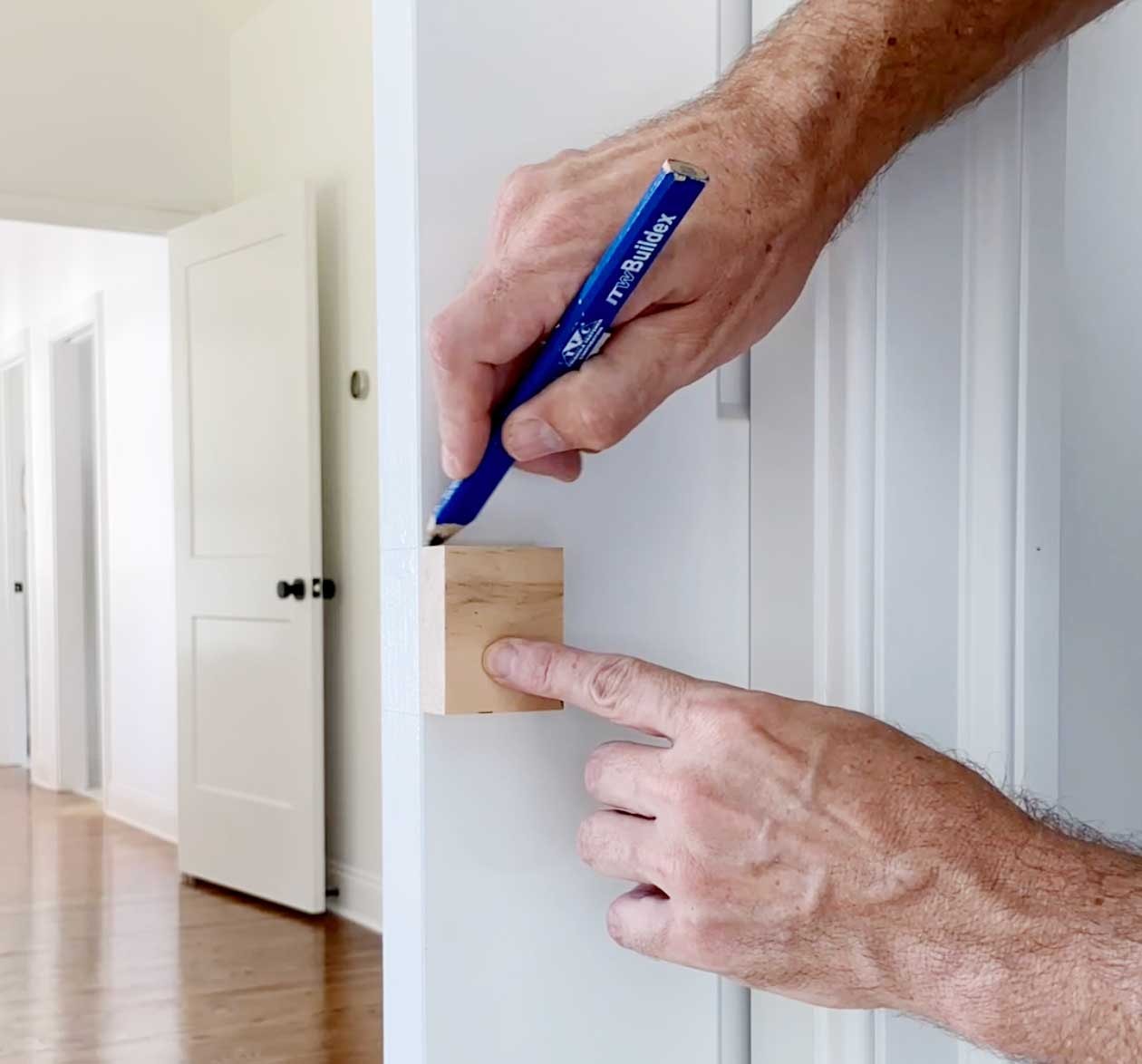My shopping cart
Your cart is currently empty.
Continue ShoppingPocket doors are a great addition to any home, as they help save space and add a touch of elegance to your interiors.
Unlike traditional swinging doors, pocket doors slide into a hidden compartment within the wall, making them perfect for small rooms or areas with limited space. Installing pocket doors may seem like a daunting task, but with the right tools and techniques, it can be easily done by anyone.
In this guide, we will walk you through the step-by-step process of installing pocket doors in your home, from planning and preparation to finishing touches. So let's get started and give your home a stylish upgrade with pocket doors!

A pocket door is a type of sliding door that disappears into a compartment within the wall when opened, hence the name "pocket" door. This allows for more space in a room as there is no need for clearance to open or close the door like with traditional swinging doors.
Pocket doors are commonly used in small rooms such as bathrooms, closets, and pantries, but can also be used in larger spaces to create a seamless and modern look. They come in various designs and materials such as wood, glass, or metal, allowing you to choose one that best suits your interior decor.
One of the main advantages of pocket doors is their space-saving feature. This makes them a popular choice for modern homes with limited square footage. They also offer more privacy compared to open archways or curtains. Additionally, pocket doors are easier to operate for those with mobility issues, as they require less strength and effort to slide open and close.
Before starting the installation process, there are a few essential tools and materials that you will need to have on hand.
Firstly, you will need a pocket door kit, which typically includes the track and hardware needed for installation. Make sure to choose one that fits the size of your door opening. You will also need a circular saw, drill, level, measuring tape, hammer, chisel, and screwdriver for the installation process.
In addition to these tools, you will also need construction adhesive and screws to attach the track to the wall studs. If you are installing a pocket door in an existing wall, you may also require drywall repair materials such as spackle and sandpaper to patch up any holes or damage. It's always a good idea to have some extra paint on hand to touch up the wall after installation.
Lastly, it's crucial to read and follow the manufacturer's instructions carefully before starting the installation process. This will ensure that you have all the necessary tools and materials and avoid any mistakes along the way.

Now that you have all the necessary tools and materials, it's time to start the installation process. Follow these step-by-step instructions for a successful pocket door installation:
Before diving into the installation of your pocket door, accurate measurements are crucial. Measure the height and width of the door opening where the pocket door will be installed, ensuring you account for the thickness of the door itself.
It’s also important to check for any obstructions within the wall cavity, such as pipes or electrical wiring, that could impede the installation.
Next, remove any existing door trim and prepare the area by clearing furniture and other items for easy access. Finally, ensure the floor surface is level and free of debris, which will help facilitate a smooth installation process as you move forward.
Once you have the necessary measurements, it’s time to install the track. The track is what allows the door to slide into the wall cavity when opened.
Firstly, locate and mark the top of the pocket door opening on both sides of the wall. Using a level, draw a horizontal line across these marks. This will serve as your guide for installing the track.
Next, attach one side of the track to the floor using construction adhesive and screws. Once secure, attach the other side of the track to the header above using screws or nails. Make sure that both sides are level before moving on to installing the door frame.
Using the measurements taken earlier, cut the door frame to fit the opening. Most pocket door kits come with pre-cut frames, but if you need to trim it down, make sure to follow manufacturer instructions.
Place the door frame into the opening and secure it using screws or nails. Make sure that the frame is plumb and level before moving on to installing the rollers and door. It’s important to note that some kits may require you to assemble the door frame as part of the installation process. In this case, follow manufacturer instructions carefully for proper assembly.
Also, if installing a pocket door in an existing wall, you will need to cut an opening in the drywall for the door frame. This can be done using a drywall saw and following manufacturer instructions for cutting the correct size and shape.
Using the hardware provided with your pocket door kit, attach the rollers onto both sides of your door according to manufacturer instructions. These rollers will allow your door to slide smoothly along the track.
Next, carefully lift the door into the frame and attach it to the rollers. Make sure that the door is level and not rubbing against any part of the frame. Adjust as necessary before moving on to installing door guides.
Additonally, if your door has a decorative side and a plain side, make sure that the decorative side is facing outward when installed.
Door guides are essential for keeping the door aligned and preventing it from swinging or rubbing against the frame. Depending on your pocket door kit, you may have different types of door guides such as floor-mounted or wall-mounted.
Install the appropriate door guides according to manufacturer instructions and adjust them as necessary to ensure smooth sliding motion of the door.
Once all components are installed, it’s time to adjust the rollers for optimal performance. Use a screwdriver or wrench to adjust the height of each roller so that the door slides easily along the track without any rubbing or resistance.
Next, test the door by sliding it open and closed multiple times. Make any necessary adjustments until it moves smoothly and seamlessly into the wall cavity.
After completing all installation steps, add finishing touches such as trim and paint to give your pocket door a polished look. You can also install a doorknob or handle according to your preference.
But before calling it a day, make sure to test the door again and check for any adjustments that may need to be made. It’s better to catch and fix any issues now rather than later when everything is already in place.
So these are the steps for installing a pocket door. Following these instructions carefully will ensure a successful installation and save you from any headaches down the road.

When it comes to installing a pocket door, the location matters more than you may think. Depending on where you plan to install your pocket door, there are additional factors to consider that could affect the installation process.
For example, if your pocket door will be installed in a bathroom or other humid environment, you'll need to ensure that the materials used can withstand moisture and won't warp or deteriorate over time. In this case, using waterproof materials such as PVC or composite wood may be a better option than traditional wood.
Additionally, consider the direction of the door's slide when choosing its location. You want to make sure that it won't be obstructed by any furniture or fixtures in the room.
Another important factor to consider is the weight of the door. If you plan on using a heavier door, make sure that the wall and track can support its weight before proceeding with installation.
Lastly, think about functionality when choosing a location for your pocket door. Will it provide convenient access between rooms or create more usable space? These are all important considerations to keep in mind as you plan for and install your pocket door.
Choosing the right pocket door kit is crucial for a successful installation. With so many options available, it can be overwhelming to make the right choice. Here are a few key factors to consider when selecting your pocket door kit:
When selecting a pocket door kit, the size of the door is one of the most critical factors. Measure the width and height of the opening where the door will be installed to ensure a proper fit. Standard pocket doors typically come in sizes like 24”, 28”, 30”, 32”, and 36” in width and 80” in height.
If your opening doesn’t match these dimensions, you may need to consider custom options or adjust the framing accordingly.
Keep in mind that the door must also allow for clearance above and below for the track and guides. Choosing the right door size not only ensures a functional installation but also enhances the overall aesthetics of the space.
The standard wall thickness for pocket doors is usually around 4-9 inches. However, if your walls are thicker than this, you will need to purchase a pocket door kit specifically designed for thicker walls or make necessary adjustments during installation.
It’s important to note that the thickness of the wall will also affect the size and type of hardware needed for installation. Be sure to check the manufacturer's recommendations before purchasing a pocket door kit.
Plus, thicker walls may require additional structural support to bear the weight of the door. This is important to consider for both safety and proper functionality of your pocket door.
The weight of your pocket door will impact the type and size of hardware needed for installation. Heavier doors will require sturdier rollers and tracks, while lighter doors can use smaller, simpler hardware.
Be sure to check the maximum weight capacity of each component before purchasing a pocket door kit. It’s also important to keep in mind that if you plan on using a heavier or custom-made door, you may need to make additional adjustments during installation or purchase specialized hardware.
Choosing a pocket door kit that is compatible with the weight of your door will ensure a smooth sliding motion and prevent any future issues.
Pocket doors come in a variety of materials, including wood, metal, and composite options. Each material has its own advantages and aesthetic appeal, so consider which one best fits your needs and preferences.
Additionally, pocket door kits also come in various finishes such as brushed nickel or oil-rubbed bronze. This can add a touch of style to your pocket door while also coordinating with other hardware in the room.
Be sure to choose a material and finish that will not only look great but also hold up well over time. You want your pocket door to not only function smoothly but also maintain its appearance for years to come.
Pocket door kits can range in price from budget-friendly options to more expensive, high-end choices. Consider your budget and the features you need before making a purchase.
While it may be tempting to opt for the cheapest option, keep in mind that investing in a higher-quality pocket door kit can often save you time and money on future repairs or replacements.
Shop around and compare prices and features before making a decision. It’s important to find the right balance between cost and quality when choosing a pocket door kit.
Selecting the right pocket door kit is crucial for a successful and long-lasting installation. Keep these factors in mind when making your selection to ensure that your pocket door not only looks great but also functions smoothly for years to come.
Pocket doors are a great space-saving option for homes with limited square footage or small rooms where traditional hinged doors may not be practical. They can also add a touch of style and elegance to any space. However, before deciding whether your home needs a pocket door, there are a few things to consider.
Firstly, assess the layout and flow of your home. Will adding a pocket door improve traffic flow between rooms or create more usable space? If so, then it may be worth considering installing one.
Secondly, consider the functionality of the room where you plan on installing a pocket door. For example, if it is a bathroom or bedroom, privacy may be a concern. In this case, you may want to consider a pocket door with a locking mechanism for added security.
Lastly, think about the structural integrity of your walls and if they can support the weight of a pocket door. This is especially important for older homes with weaker structures. You may need to consult a professional or make necessary adjustments before proceeding with installation.
At My City Doors, we strive to provide our customers with the latest trends and styles in interior doors. Our recent publications reflect our commitment to helping homeowners elevate their living spaces through creative and functional door designs.
Our wide selection of door hardware is carefully curated to offer the best options for interior doors, ensuring both style and functionality. We understand that every home is unique, which is why we offer a variety of options to suit different styles and needs.
Also, our team at My City Doors understands the importance of preserving the character and charm of historic homes. That's why we offer a special selection of interior doors that are suitable for these types of homes.
At My City Doors, we are dedicated to helping homeowners create beautiful and functional living spaces through quality interior doors. Visit us today!
Before installing a pocket door frame in a load bearing wall, it's crucial to consult a professional to ensure the wall can safely support the modification. The load bearing wall may require additional support, such as a header, to maintain structural integrity while accommodating the new pocket door.
Following pocket door kit instructions typically involves assembling the pocket door frame, installing it within the wall, and attaching the pocket door hardware. Carefully follow each step to ensure that the frame is level and that the pocket door slides smoothly. Proper installation of door hardware is essential for the door's functionality.
To install door latch hardware on a new pocket door, first, measure and mark the location on the door edge. Using the pocket door kit instructions, carefully drill the necessary holes and attach the latch. Ensure the door latch hardware is aligned with the door frame to allow for secure latching and smooth operation.
When adding door casing and door trim painted to a pocket door, make sure that the trim aligns with the pocket door frame and does not interfere with the door's movement. Install the door casing after the door is in place, and then finish with door trim painted to match the surrounding decor for a seamless look.
In sum, pocket doors are a versatile and convenient option for homeowners looking to save space and add style to their living spaces. Before purchasing a pocket door kit, consider factors such as wall thickness, weight of the door, material and finish options, and price range.
Additionally, assess if your home would benefit from a pocket door in terms of layout and functionality. And when it comes to choosing the best pocket door kit for your needs, trust My City Doors for quality products and exceptional customer service.
We hope this guide has helped you understand more about pocket doors and how they can enhance your home. Remember to do thorough research and consult with professionals before making any installation decisions.